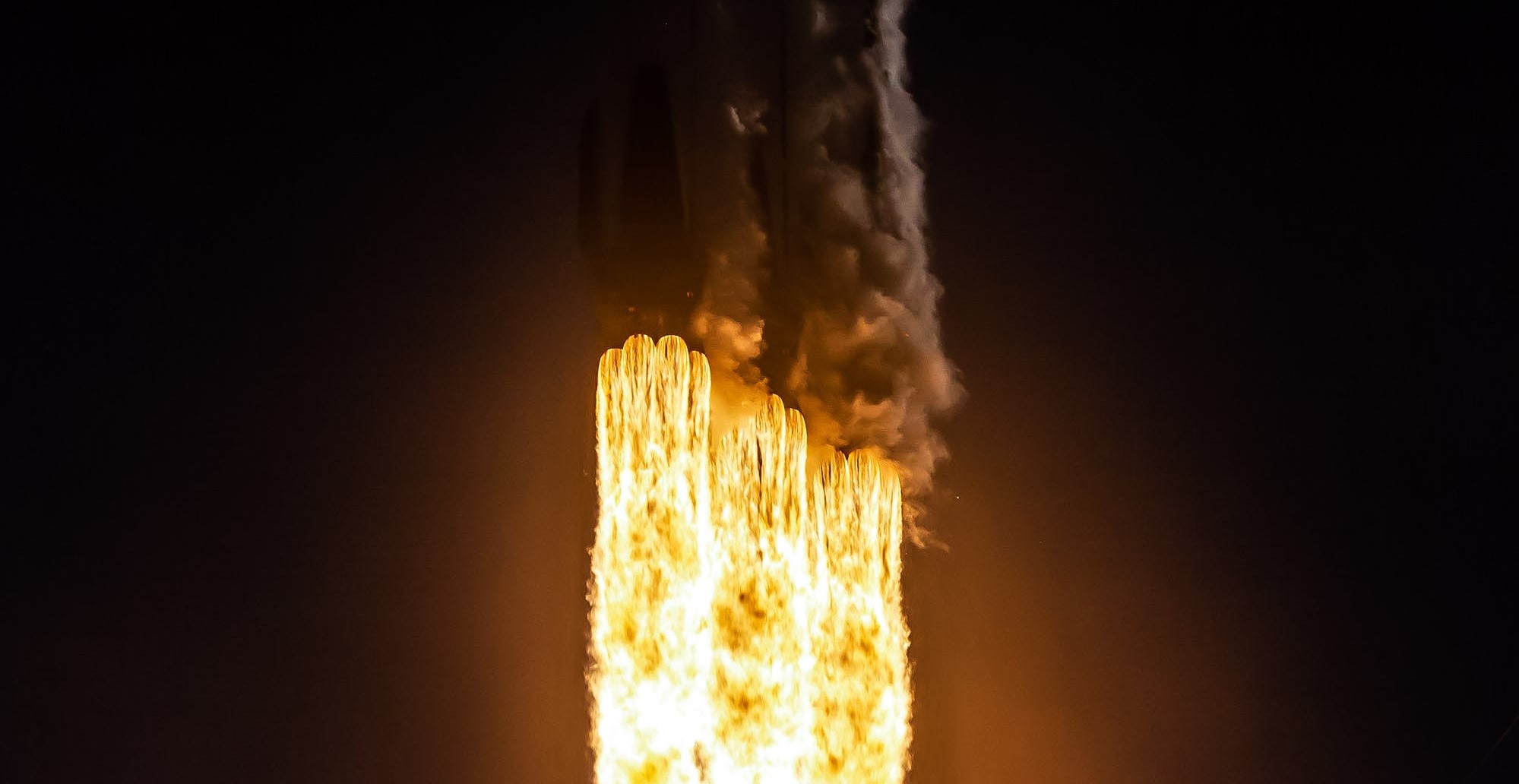

News
SpaceX’s Falcon Heavy rocket could launch a NASA space station to the Moon
According to NASA, a SpaceX Falcon Heavy rocket (or another commercial heavy-lift launch vehicle) could potentially launch the bulk of a new Moon-orbiting space station in a single go, saving money and reducing risk.
Known as the Gateway, NASA is working to build a tiny space station in an exotic and odd orbit around the Moon. Lacking any clear and pressing purpose, NASA and the Gateway’s proponents have argued that it could serve as a testbed for interplanetary missions, allowing the space agency to figure out how to keep astronauts alive and healthy in deep space. Later, it was proposed as a sort of unwieldy orbital tug and home base for crewed Moon landers, although the Gateway appears to have recently been removed from any plans for mid-2020s Moon landings.
Most likely, the station is being built in order to give NASA’s wildly over-budget, behind-schedule Orion spacecraft and SLS rocket some kind of destination worthy of their gobsmacking $2-3 billion launch cost and $35-40 billion development cost. Regardless, a space station orbiting the Moon – while lacking a clear and present scientific or exploratory reason for its existence – is undeniably cool and exciting and will indeed need to be launched into cislunar space. Previously planned to launch as separate modules that would then rendezvous and dock in at the Moon, NASA has recently decided to switch gears.
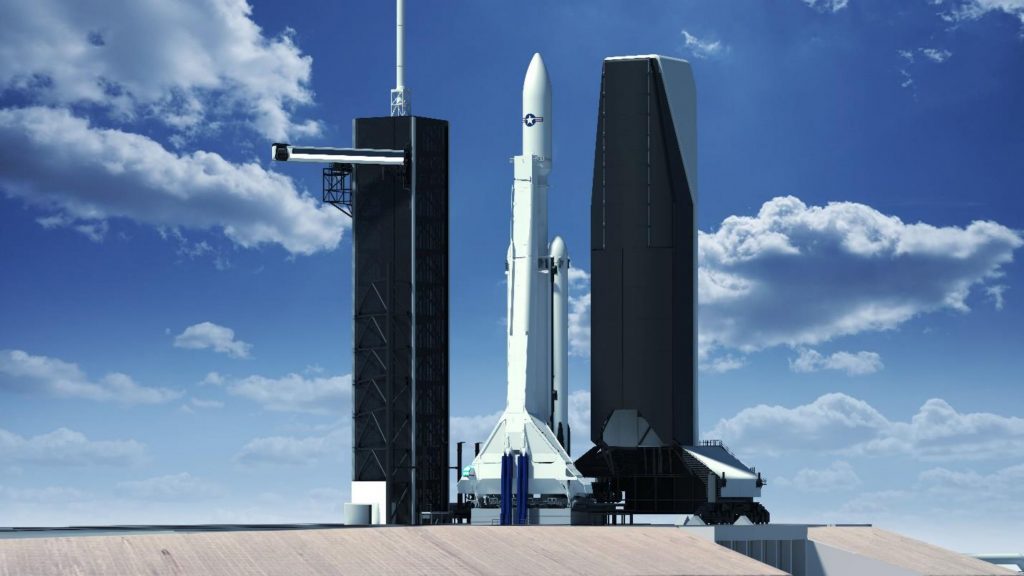
As of May 2020, NASA has awarded three critical hardware contracts for Gateway. In 2019, the space agency awarded contracts to Maxar and Northrop Grumman to build the Power and Propulsion Element (PPE) and Habitation and Logistics Outpost (HALO), respectively. As the name suggests, the PPE will feature an exceptionally large ~50 kW solar array and the most powerful electric thrusters ever flown in space, thus supplying Gateway with electricity and propulsion. HALO is a miniscule habitat module also responsible for life support and providing all other basic necessities for astronauts to live in space, all of which will leave a tiny amount of actual habitable volume for those astronauts to live in.
Most recently, NASA also awarded SpaceX a contract to develop a new Dragon XL spacecraft that will launch on Falcon Heavy and autonomously resupply the lunar space station at least twice, should Gateway actually make it to launch.
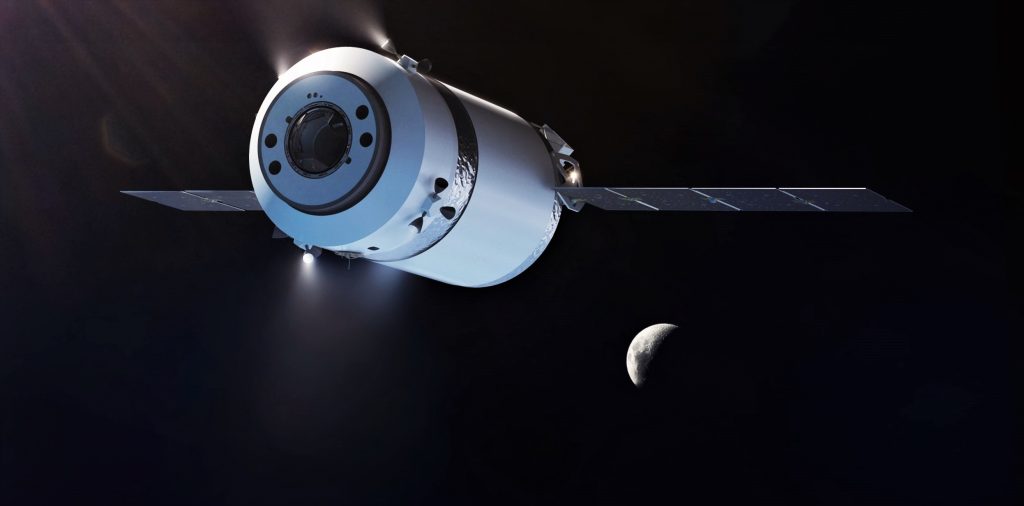
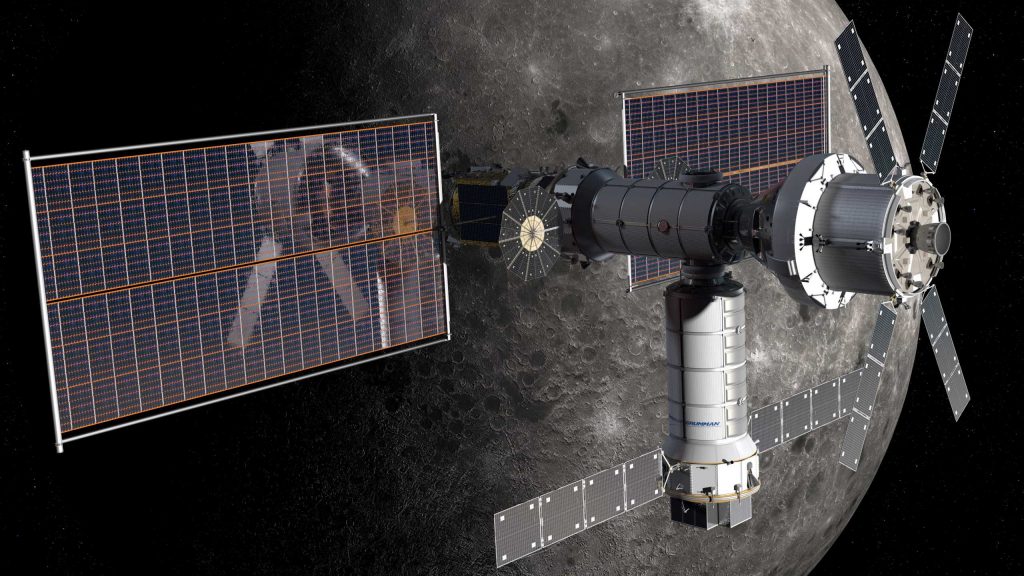
The notional plan is to eventually expand the habitable volume of the station from living in a large SUV to something more like a small studio apartment, a bit less than a third as large as the International Space Station (ISS) in a best-case scenario. The ISS is designed to support at least six astronauts simultaneously and has done so for almost two decades, albeit only with the help of resupply missions launched from Earth every 2-3 months. Indeed, the plan is to send up to four astronauts to the Gateway for no more than 90 days a year.
Two birds, one stone; two eggs, one basket
Originally, NASA wanted to launch the PPE and HALO modules – together representing the absolute bare minimum needed to build a functional Gateway – on separate commercial rockets in 2022 and 2023, respectively. Now, according to NASA associate administrator Doug Loverro, the space agency has made the decision to launch both modules simultaneously on the same commercial rocket.
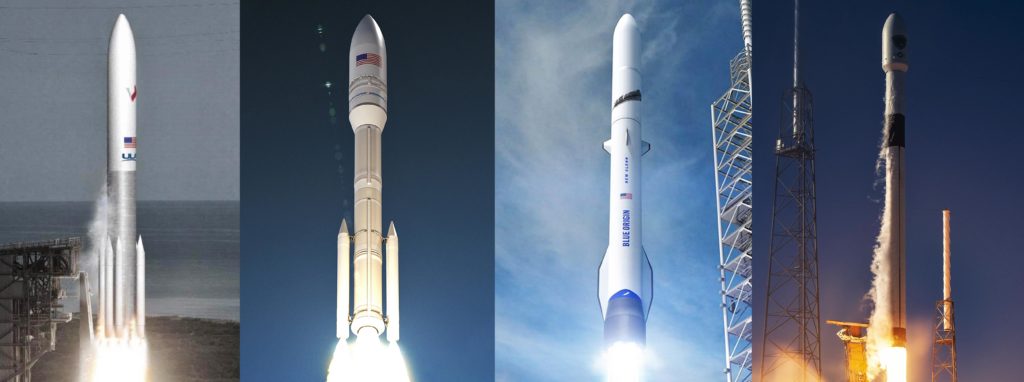
This decision was made in large part because it makes sense from a technical simplicity and overall efficiency standpoint but also because several commercial launch vehicles – either currently operational or soon to be – are set to debut extremely large payload fairings. As a combined payload, the Gateway PPE and HALO modules would be too big for just about any existing launch vehicle, while the tiny handful it might fit in lack the performance needed to send such a heavy payload to the Moon.
Falcon Heavy apparently has the performance needed, as NASA used the rocket and a new stretched fairing developed by SpaceX for military customers as a baseline to determine whether PPE and HALO could launch together. Given that NASA could have technically used any of the vehicles expected to have large payload fairings for that analysis, the explicit use and mention of Falcon Heavy rather strongly suggests that the SpaceX rocket is a front runner for the new combined launch contract. This isn’t exactly surprising, given that the massive rocket has already completed three successful launches and will attempt at least another four missions between now and 2023.
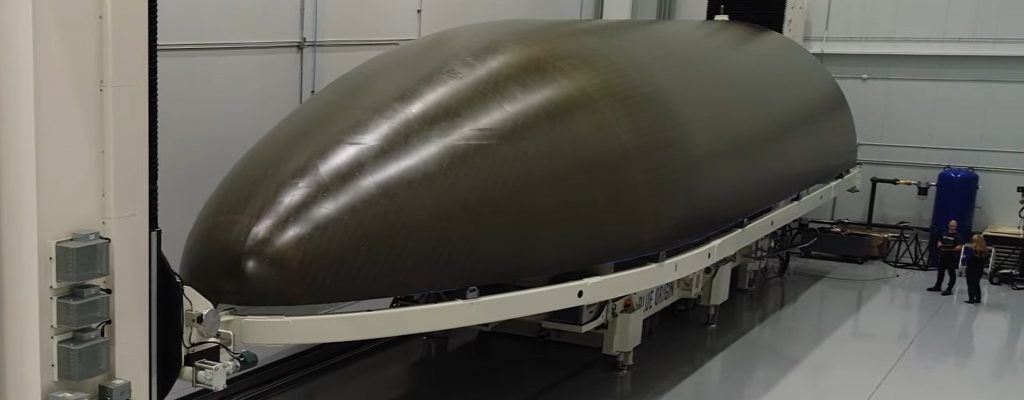
Of the other launch vehicles expected to feature large fairings capable of supporting the combined PPE/HALO payload, ULA’s Vulcan Centaur rocket is scheduled to launch for the first time in July 2021, while Blue Origin’s New Glenn is unlikely to launch before late 2021. Northrop Grumman is also developing the Omega rocket with a large fairing, although it’s unlikely to have the performance needed for the unique Gateway payload. As such, by 2023, Falcon Heavy will almost certainly have a record of launches well out of reach of other prospective PPE/HALO launch competitors. For obvious reasons, putting both modules of a space station on a single launch raises the stakes, making it more critical than ever than risk be reduced where it can be – especially important for launch operations.
Notionally including Gateway’s PPE and HALO, Falcon Heavy now has as many as nine launches on contract (or nearly so) over the next five or so years. It’s extraordinarily unlikely that any of Falcon Heavy’s prospective competitors will be able to get close to the SpaceX rocket’s flight history by 2023, effectively making Falcon Heavy the de facto choice for NASA from an apolitical, technical perspective.
News
Tesla launches in India with Model Y, showing pricing will be biggest challenge
Tesla finally got its Model Y launched in India, but it will surely come at a price for consumers.

Tesla has officially launched in India following years of delays, as it brought its Model Y to the market for the first time on Tuesday.
However, the launch showed that pricing is going to be its biggest challenge. The all-electric Model Y is priced significantly higher than in other major markets in which Tesla operates.
On Tuesday, Tesla’s Model Y went up for sale for 59,89,000 rupees for the Rear-Wheel Drive configuration, while the Long Range Rear-Wheel Drive was priced at 67,89,000.
This equates to $69,686 for the RWD and $78,994 for the Long Range RWD, a substantial markup compared to what these cars sell for in the United States.
🚨 Here’s the difference in price for the Tesla Model Y in the U.S. compared to India.
🚨 59,89,000 is $69,686
🚨 67,89,000 is $78,994 pic.twitter.com/7EUzyWLcED— TESLARATI (@Teslarati) July 15, 2025
Deliveries are currently scheduled for the third quarter, and it will be interesting to see how many units they can sell in the market at this price point.
The price includes tariffs and additional fees that are applied by the Indian government, which has aimed to work with foreign automakers to come to terms on lower duties that increase vehicle cost.
Tesla Model Y seen testing under wraps in India ahead of launch
There is a chance that these duties will be removed, which would create a more stable and affordable pricing model for Tesla in the future. President Trump and Indian Prime Minister Narendra Modi continue to iron out those details.
Maharashtra Chief Minister Devendra Fadnavis said to reporters outside the company’s new outlet in the region (via Reuters):
“In the future, we wish to see R&D and manufacturing done in India, and I am sure at an appropriate stage, Tesla will think about it.”
It appears to be eerily similar to the same “game of chicken” Tesla played with Indian government officials for the past few years. Tesla has always wanted to enter India, but was unable to do so due to these import duties.
India wanted Tesla to commit to building a Gigafactory in the country, but Tesla wanted to test demand first.
It seems this could be that demand test, and the duties are going to have a significant impact on what demand will actually be.
Elon Musk
Tesla ups Robotaxi fare price to another comical figure with service area expansion
Tesla upped its fare price for a Robotaxi ride from $4.20 to, you guessed it, $6.90.

Tesla has upped its fare price for the Robotaxi platform in Austin for the first time since its launch on June 22. The increase came on the same day that Tesla expanded its Service Area for the Robotaxi ride-hailing service, offering rides to a broader portion of the city.
The price is up from $4.20, a figure that many Tesla fans will find amusing, considering CEO Elon Musk has used that number, as well as ’69,’ as a light-hearted attempt at comedy over the past several years.
Musk confirmed yesterday that Tesla would up the price per ride from that $4.20 point to $6.90. Are we really surprised that is what the company decided on, as the expansion of the Service Area also took effect on Monday?
But the price is now a princely $6.90, as foretold in the prophecy 😂
— Elon Musk (@elonmusk) July 14, 2025
The Service Area expansion was also somewhat of a joke too, especially considering the shape of the new region where the driverless service can travel.
I wrote yesterday about how it might be funny, but in reality, it is more of a message to competitors that Tesla can expand in Austin wherever it wants at any time.
Tesla’s Robotaxi expansion wasn’t a joke, it was a warning to competitors
It was only a matter of time before the Robotaxi platform would subject riders to a higher, flat fee for a ride. This is primarily due to two reasons: the size of the access program is increasing, and, more importantly, the service area is expanding in size.
Tesla has already surpassed Waymo in Austin in terms of its service area, which is roughly five square miles larger. Waymo launched driverless rides to the public back in March, while Tesla’s just became available to a small group in June. Tesla has already expanded it, allowing new members to hail a ride from a driverless Model Y nearly every day.
The Robotaxi app is also becoming more robust as Tesla is adding new features with updates. It has already been updated on two occasions, with the most recent improvements being rolled out yesterday.
Tesla updates Robotaxi app with several big changes, including wider service area
News
Tesla Model Y and Model 3 dominate U.S. EV sales despite headwinds
Tesla’s two mainstream vehicles accounted for more than 40% of all EVs sold in the United States in Q2 2025.

Tesla’s Model Y and Model 3 remained the top-selling electric vehicles in the U.S. during Q2 2025, even as the broader EV market dipped 6.3% year-over-year.
The Model Y logged 86,120 units sold, followed by the Model 3 at 48,803. This means that Tesla’s two mainstream vehicles accounted for 43% of all EVs sold in the United States during the second quarter, as per data from Cox Automotive.
Tesla leads amid tax credit uncertainty and a tough first half
Tesla’s performance in Q2 is notable given a series of hurdles earlier in the year. The company temporarily paused Model Y deliveries in Q1 as it transitioned to the production of the new Model Y, and its retail presence was hit by protests and vandalism tied to political backlash against CEO Elon Musk. The fallout carried into Q2, yet Tesla’s two mass-market vehicles still outsold the next eight EVs combined.
Q2 marked just the third-ever YoY decline in quarterly EV sales, totaling 310,839 units. Electric vehicle sales, however, were still up 4.9% from Q1 and reached a record 607,089 units in the first half of 2025. Analysts also expect a surge in Q3 as buyers rush to qualify for federal EV tax credits before they expire on October 1, Cox Automotive noted in a post.
Legacy rivals gain ground, but Tesla holds its commanding lead
General Motors more than doubled its EV volume in the first half of 2025, selling over 78,000 units and boosting its EV market share to 12.9%. Chevrolet became the second-best-selling EV brand, pushing GM past Ford and Hyundai. Tesla, however, still retained a commanding 44.7% electric vehicle market share despite a 12% drop in in Q2 revenue, following a decline of almost 9% in Q1.
Incentives reached record highs in Q2, averaging 14.8% of transaction prices, roughly $8,500 per vehicle. As government support winds down, the used EV market is also gaining momentum, with over 100,000 used EVs sold in Q2.
Q2 2025 Kelley Blue Book EV Sales Report by Simon Alvarez on Scribd
-

 News3 days ago
News3 days agoTesla debuts hands-free Grok AI with update 2025.26: What you need to know
-

 Elon Musk1 week ago
Elon Musk1 week agoElon Musk confirms Grok 4 launch on July 9 with livestream event
-

 Elon Musk5 days ago
Elon Musk5 days agoxAI launches Grok 4 with new $300/month SuperGrok Heavy subscription
-

 News2 weeks ago
News2 weeks agoTesla Model 3 ranks as the safest new car in Europe for 2025, per Euro NCAP tests
-

 Elon Musk2 weeks ago
Elon Musk2 weeks agoxAI’s Memphis data center receives air permit despite community criticism
-

 News5 days ago
News5 days agoTesla begins Robotaxi certification push in Arizona: report
-

 Elon Musk2 weeks ago
Elon Musk2 weeks agoTesla reveals it is using AI to make factories more sustainable: here’s how
-

 Elon Musk2 weeks ago
Elon Musk2 weeks agoTesla scrambles after Musk sidekick exit, CEO takes over sales
















